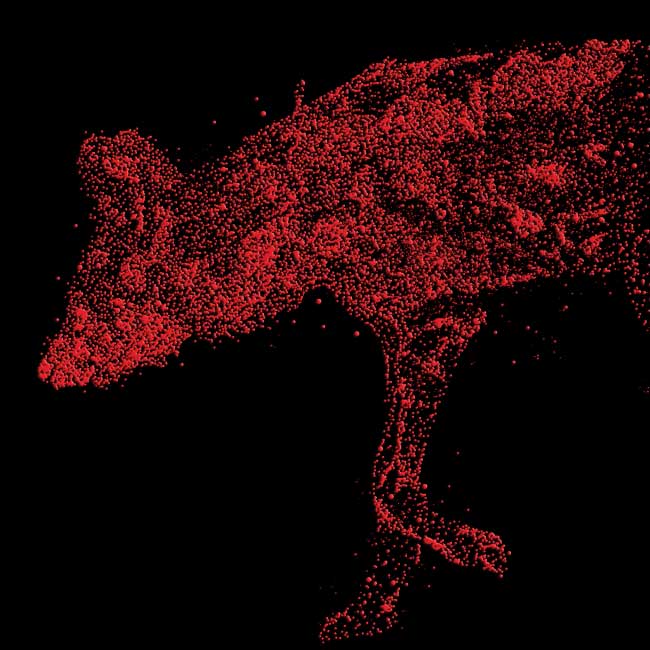
Science Snippets: Wild Dogs steer clear of lion scat
Erin Adams and Lizanne Roxburgh, the EWT Conservation Planning and Science Unit
African Wild Dogs (Lycaon pictus) are currently classified as “Endangered” on the IUCN Red List. Within South Africa, there is a free-roaming population, which is a population of Wild Dogs that occur outside of protected areas. This population makes up as much as 20% of South Africa’s population. As they are not within protected areas, natural prey for Wild Dogs is often limited. Therefore, the Wild Dogs may move through private farming lands and consume the livestock and game, which brings them into conflict with the landowners. An estimated 39% of free-roaming Wild Dogs are killed through direct persecution resulting from this conflict. A recent study* co-authored by EWT scientists has tested a novel way of keeping Wild Dogs off private land and safe from persecution.
In their natural environment, dominant predators, such as lions, often control Wild Dog populations. Therefore, scientists aimed to keep Wild Dogs out of certain areas by using the scat of lions as a proxy for lion presence. As some of the Wild Dogs were already fitted with GPS trackers, it was easy to monitor their movements. The scientists tested whether the lion scats alone could deter Wild Dogs from entering private property and causing a threat to livelihoods. Within the study, some properties were treated with lion scat, while others were not treated with lion scat as a control to test the effectiveness of lion scat as a deterrent.
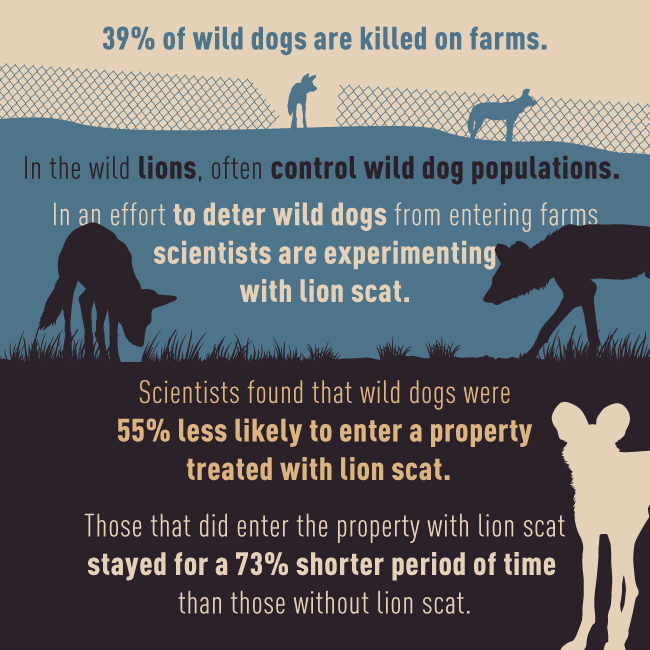
A recent study* co-authored by EWT scientists has tested a novel way of keeping Wild Dogs off private land and safe from persecution.
The scientists found that Wild Dogs were 55% less likely to enter a property treated with lion scat. Those that did enter the property with lion scat stayed for a 73% shorter period than those without lion scat. The scientists also found that some Wild Dog packs were more sensitive to the presence of lions than other packs were, likely due to the packs’ different exposure to and interaction with lions.
The results of the novel approach to managing free-roaming Wild Dogs tested in this study may benefit Wild Dog conservation by reducing conflict with farmers and other landowners. Further studies on using biological cues to control large carnivore movements should be conducted as this could play a significant role in their conservation.
*Haring, R. D., Beverley, G., Thompson, P. N., Taylor, A., & O’Dell, J. H. (2023). Evaluation of lion (Panthera leo) scat as a Wild Dog (Lycaon pictus) deterrent on game farms. Wildlife Research. https://doi.org/10.1071/WR22084.
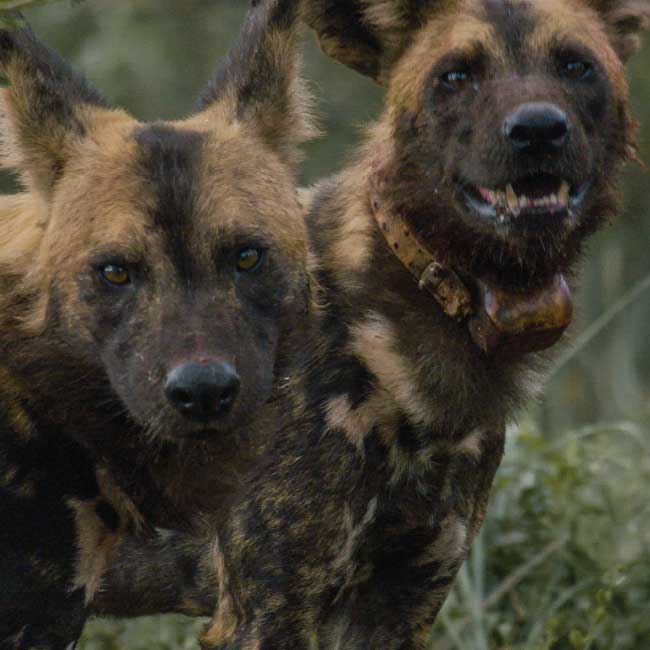
Science snippets: Not all carnivores are monitored equally
Erin Adams and Lizanne Roxburgh, the EWT Conservation Planning and Science Unit
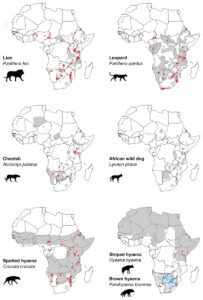
The locations of peer-reviewed African large carnivore studies (2000–2020) from Strampelli et al. (2022). Red crosses show where research has taken place, except in the case of Brown Hyaena, where blue crosses are used. Grey areas represent current geographical ranges, except in the case of Brown Hyaena, where a dotted pattern is used.
African large carnivores have undergone significant population declines over the years. Important information needed to conserve them is how many individuals are left in the wild, which can be gained through monitoring, but not all carnivores have been monitored equally. In a recent publication* co-authored by EWT scientists, the monitoring programmes of African carnivores were reviewed to identify important knowledge gaps.
The scientists assessed all scientific publications on the African Lion, leopard, Cheetah, African Wild Dog, Spotted Hyaena, Striped Hyaena, And Brown Hyaena produced since 2000. From there, they could assess which species were extensively monitored and where the research was lacking. The scientists also considered the species’ ranges across Africa and whether all regions carnivores occurred in were monitored equally.
The scientists found that the African Lion was the most researched species, followed by the Striped Hyaena. However, of the study species, the Striped Hyaena has the largest distribution across Africa but has not been studied equally across its distribution (see the figure below). The African Wild Dog had very little research attention across its narrow range. Scientists also found that the larger the distribution of a specific species within a country, the more research was done on that species. Countries such as South Africa and Kenya were among the best studied, while countries in Africa’s Northern, Western and Central regions were generally understudied.
The study further revealed that, outside of South Africa, more than 40% of the studies did not include authors from the study country. Therefore, there is a need to upskill and build capacity within African countries to better protect African carnivores across their range.
*Strampelli, P., Campbell, L. A., Henschel, P., Nicholson, S. K., Macdonald, D. W., & Dickman, A. J. (2022). Trends and biases in African large carnivore population assessments: identifying priorities and opportunities from a systematic review of two decades of research. PeerJ, 10, e14354.
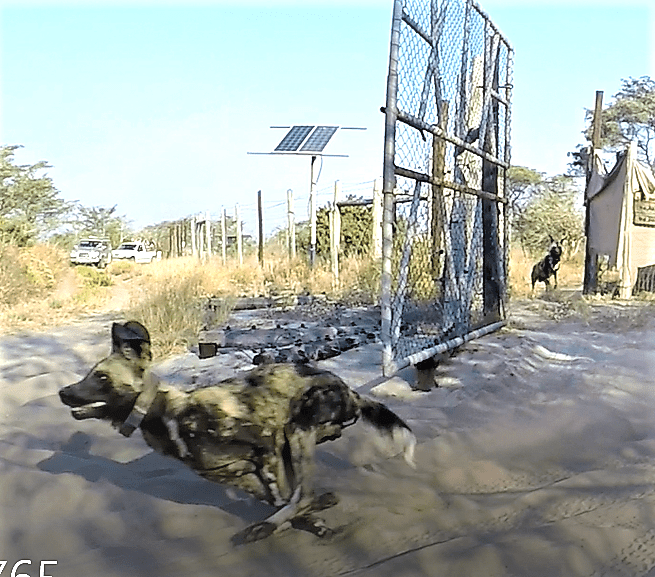
SCIENCE SNIPPETS: WHY DID THE WILD DOG CROSS THE FENCE?
ERIN ADAMS AND LIZANNE ROXBURGH, THE EWT’S CONSERVATION PLANNING AND SCIENCE UNIT
Within South Africa, fences are used to contain wildlife in reserves to protect them, particularly in human-dominated landscapes where they could easily come into conflict with people if they leave the reserve. This is especially true for medium to large-sized carnivores. However, they do cross these fences, and once outside, they are exposed to risks such as snaring, persecution, and collisions with vehicles, and any livestock they kill can incur high costs in the form of retaliatory killings by farmers. However, the reasons why they cross fences are not well understood.
African Wild Dog conservation, especially in southern Africa, often includes the translocation of wild dogs from one or more reserves and the formation of a new pack in a different reserve to ensure that genetic diversity is maintained and that population sizes are appropriate. In a recent publication co-authored by EWT scientists*, the reason behind why African Wild Dog packs cross reserve fences was investigated. Using a long-term dataset, they studied 32 Wild Dog packs across five reserves in the KwaZulu-Natal province in South Africa over 14 years. During this time, they recorded 154 events when Wild Dogs crossed fences. They looked at several factors that could be linked to fence crossings, including prey densities, rainfall, wild dog pack size, and the number of lions in the reserve.

The scientists found that the age of the pack (i.e., whether it was newly formed or well-established) and the fence integrity affected whether or not Wild Dog packs crossed the reserve fence. When fence integrity was poor, the probability of packs crossing the fence was higher, especially with newly established packs. This happens in their exploratory phase when they look for territories to occupy in the new reserve. When fence integrity was average, more established wild dog packs were more likely to escape to increase the size of their territories. When fence integrity was good, the probability of packs crossing fences was very low. Reserve management should ensure that the fence’s integrity is good to prevent these crossings. It is also important to carefully manage packs that reach about 3.5 years old, as this is when they would be more likely to expand their territories and attempt to cross the fence.
*Stone, D. W., Kelly, C., Marneweck, D. G., Druce, D. J., Hopcraft, J. G. C., & Marneweck, C. J. (2022). Fence management and time since pack formation influence African Wild Dog escapes from protected areas in South Africa. Journal for Nature Conservation, 70, 126291.
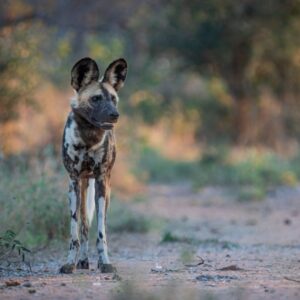
WILD DOGS REINTRODUCED TO MALAWI AFTER DECADES OF ABSENCE
On 27 July 2021, 14 African Wild Dogs were translocated successfully from South Africa and Mozambique to Liwonde National Park and Majete Wildlife Reserve in a historic project to reintroduce this Endangered species to Malawi. The translocation was undertaken through a collaboration between the Endangered Wildlife Trust [EWT] and African Parks, which manages Liwonde and Majete protected areas in partnership with Malawi’s Department of National Parks and Wildlife (DNPW). While helping to repopulate both parks, the reintroduction represents a major international effort to conserve African Wild Dogs, with only 6,600 individuals, or just 700 breeding pairs, estimated to be left on the continent.
“The Wild Dog is one of Africa’s most Endangered mammals, so we’re extremely proud to have been able to establish safe spaces in Malawi where their long-term survival can be assured”, said the Director of Malawi’s Department of National Parks and Wildlife Brighton Kumchedwa. “The conservation of our country’s natural heritage is central to our· national development strategy. Over the past two decades, our collaboration with African Parks and local communities has helped to restore multiple iconic species to our protected areas, contributing not only to meeting global biodiversity targets but to sustainable economic growth”.
The African Wild Dogs were sourced from Gorongosa National Park and Karingani Game Reserve in Mozambique, and Somkhanda Community Game Reserve and Maremani Nature Reserve in South Africa. On 27 July, all 14 animals were flown in a single aircraft from Mozambique’s Massingir Airport to Blantyre in Malawi. Eight dogs were released into bomas in Liwonde National Park and six into bomas in Majete Wildlife Reserve, where they will remain for several weeks, allowing them to adjust to the new conditions before being fully released into the wider park areas. Each pack has been fitted with a mix of satellite and radio collars to facilitate the continual monitoring of their location and habitat use and ensure their long-term protection in the parks.The dogs
The Liwonde National Park (Malawi) females were born in Somkhanda Community Game Reserve, the only community-owned reserve in the Wild Dog Range Expansion Project. Wild Dogs were introduced into the reserve in 2015, and from the reserve’s successes, Somkhanda Community Game Reserve can now contribute back to the Wild Dog range expansion work. In this case, three sisters born in 2019, offspring of the Kalahari females and Hluhluwe-iMfolozi Park males, recently showed signs of dispersal, and the collaborative decision was to capture them and bond them to male Wild Dogs and introduce the newly formed pack into Liwonde Game Reserve. Thank you to Somkhanda Game Reserve, Wildlands, Wildlife ACT – Focused Conservation, UmPhafa Private Nature Reserve (Colchester Zoo), and Ezemvelo KZN Wildlife for making this possible.
The Liwonde National Park (Malawi) males were born in Maremani Nature Reserve, a beautiful game reserve in the tropical savannah in northern Limpopo, close to the Limpopo River in the northernmost area of South Africa.
The males dispersed from their natal pack and went in search of females. In the space of ten days, the group covered 600 km, which included a stint into Bubye Valley Conservancy (Zimbabwe). Due to their vulnerability to several threats (persecution, snaring, and roadkill), a decision was made to capture the male Wild Dogs, bond with the Zululand females and introduce them into Liwonde National Park. Maremani Nature Reserve has been vital in the success of this Wild Dog population and a champion for the species in the surrounding areas.
The Majete males come from the original pack introduced into Gorongosa National Park in 2018. Gorongosa National Park is Mozambique’s flagship reserve and now boasts a thriving Wild Dog population with more than 100 Wild Dogs now roaming the landscape.
Several months ago, the Gorongosa-born males, having just turned two, dispersed from their natal pack and roamed into the buffer areas outside the park. Dr Antonio Tonecas, the head Gorongosa vet, captured the males and brought them back to safety the safety of the Gorongosa boma. Following the decision to include these males in the Majete Wildlife Reserve reintroduction, the group was relocated by air by the Mozambican veterinarian team and placed in the predator boma at Karingani Game Reserve, where they were bonded with females.
The Majete females were born on Karingani Game Reserve. The Karingani Pack was introduced in 2019 and has thrived in Karingani since. Karingani is situated in the southwest of Mozambique, bordering South Africa’s Kruger National Park. The strong conservation focus and monitoring at Karingani have seen the Wild Dog population double in the past two years.
In addition to this, Karingani has also been working in close partnership with the young organisation, Mozambique wildlife alliance – an emerging Mozambican wildlife veterinary team, mandated by the National Administration of Conservation Areas (ANAC), with high conservation impact across the country.
The Karingani pack found the Gorongosa males only days after they arrived in the Karingani boma. The Karingani team cleverly and skillfully lured the three selected females into the second compartment of the boma, capturing them without the use of anaesthesia. Since these females needed no convincing to choose the Gorongosa males, the bonding in the Karingani boma went very smoothly.


